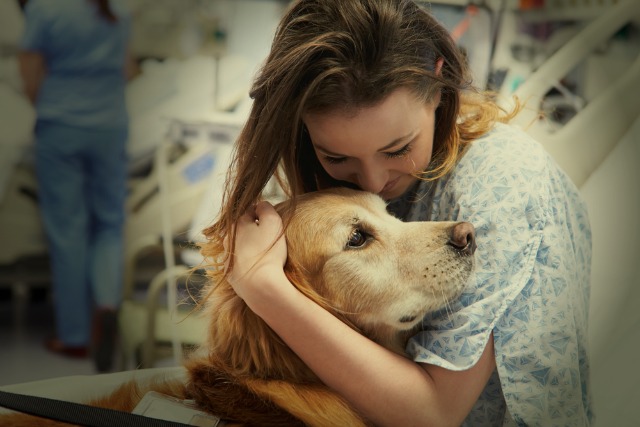Studies have shown that pets help us to lead healthier, happier lives. It has been widely accepted that there are all sorts of health and emotional benefits when we are able to interact with these happy, loving bundles of fur.
Pet Assisted Therapy is usually performed by a group of volunteers and their pets. Suitable pets include cats, dogs, and rabbits.
These two- and four-legged volunteers visit long-term care facilities, hospitals, centers for youth in distress, and more. Volunteers visit with the residents, and through their pets communicate with these people.
Not every pet is suitable. Volunteer organizations that run pet assisted therapy groups typically screen both the volunteers and the pets. Your pet may be a candidate for pet assisted therapy if he or she:• Loves people. This is essential, otherwise your pet will not enjoy itself. They should love attention and love simply being around people.
• Gets along with other pets. Your pet needs to be well-socialized and able to tolerate other dogs, cats, and possibly even rabbits. No chasing, no fighting … playing is okay after “work hours”.
• Is well-mannered. Your pet should respond to basic obedience commands such as sit, stay, down, and come. They should also know the word “no!”.
• Responds okay to loud, sudden, or strange noises, unusual equipment, and all types of handling. The screening process will test your pet’s reaction to these situations and more.
I’ve taken my little dog to a long-term care facility for many years now. It is a fantastically rewarding experience. There are some people whose faces will light up as soon as they see him. Some of them don’t say a single word to me; but they talk to the dog, and for a few minutes they’re relaxed and happy. Others are quieter; they wait for us to come by, then sit and pet the dog, a smile on their faces.
The nurses and nurses’ assistants have said that after our visits, the residents are happier and healthier – there is noticeable change in their well-being, and for some even their blood pressure is lower.
If pet assisted therapy is something you’d like to try, contact your local organization. Many pets adore it (our dogs are always excited when it’s “working night”) … and it’s a wonderful way for both you and your pet to give back to your community!



